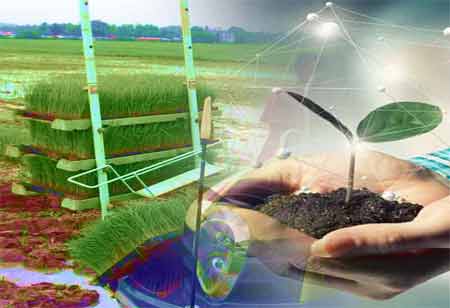Thank you for Subscribing to Agri Business Review Weekly Brief
The Vital Role of Horticultural Crops in Promoting Sustainable Agriculture
Horticultural crops have an important role as a lighthouse in the pursuit of resilient and sustainable agriculture, showing the path towards a prosperous future.

By
Agri Business Review | Thursday, January 18, 2024
Stay ahead of the industry with exclusive feature stories on the top companies, expert insights and the latest news delivered straight to your inbox. Subscribe today.
Horticulture's diverse crops empower farmers, boost nutrition, and elevate economies, shaping a sustainable and resilient agricultural future.
FREMONT, CA: Horticultural crops have an important role as a lighthouse in the pursuit of resilient and sustainable agriculture, showing the path towards a prosperous future. The cultivation of horticultural endeavors' diverse potential is essential to the future of agriculture. From increasing farmers' wealth to improving food intake and stimulating economic development, these crops play a pivotal role in creating a more resilient and sustainable agricultural environment.
Field Ailments and Effective Management Strategies
The use of chemical substances like bactericides, fungicides, and insecticides—which are harmful to the causal agents, phytopathogens, or vectors of plant diseases—is the primary method of managing illnesses in the field. Proper illness care is crucial to reducing these effects.
Field and horticultural crop disease management demands a comprehensive strategy that incorporates multiple tactics. Crop rotation breaks up disease cycles and prevents the accumulation of some pathogens in the soil. Choosing crop types that are resistant to disease, which are created via plant breeding initiatives, increases agricultural resilience. In order to avoid pathogen overwintering, removing and destroying any contaminated plant debris from fields and gardens is important.
By keeping foliage dry, good irrigation techniques—like avoiding over-irrigation and using drip irrigation—help reduce fungal diseases. When using fungicides and insecticides, it's important to use them strategically and according to approved rates and schedules. Pest populations can be controlled by using beneficial organisms like nematodes or predatory insects for biological management.
Enforcing sanitation measures, including keeping tools, equipment, and hands clean, prevents the spread of pathogens. Quarantine measures for new plants, pruning, and thinning for improved air circulation, and soil management for enhanced health contribute to a holistic disease management strategy. Early detection through regular scouting and prompt action is emphasized, along with monitoring weather conditions conducive to disease development. Ongoing education on specific crop diseases and updated management practices ensures a proactive and informed approach to disease prevention and control.
The Significance of Horticulture
Farmers' incomes have increased dramatically as a result of horticulture, and as a result, the average yearly consumption of fruits and vegetables has increased from 40 to 85 grams and 95 to 175 grams, respectively. Horticulture offers financial advantages and also empowers women by providing a variety of employment alternatives in growing mushrooms, creating vegetable seeds, and cultivating flowers. Surprisingly, horticulture crops make up only 8.5 percent of the region's agricultural GDP but account for almost 24.5 percent of it.
Horticulture plays a major role in shaping the agricultural landscape with over fifty vegetable species, including star crops like potatoes, onions, peas, cauliflower, tomatoes, eggplants, okra, cabbage, and cucurbits. The unique field of horticultural science, which blends the study of plants with aesthetics, has applications in improving plant development, marketing, and animal and human well-being. Horticulture is a well-managed agricultural practice that regularly produces nutrient-dense crops, enhances the aesthetics of the surrounding area, and encourages leisure activities.
Horticulture's vital role in creating a sustainable future is demonstrated by its capacity to improve communities, empower farmers, and diversify nutritional access. To promote a prosperous, equitable, and sustainable agricultural future, it is imperative to acknowledge and fully utilize the potential of horticultural crops.




